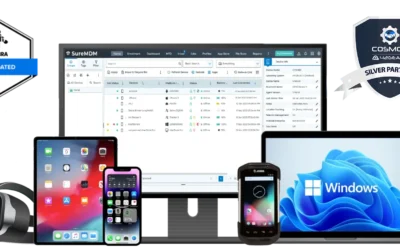When businesses consider implementing an RFID system, the immediate question often revolves around the upfront cost. However, there is an even more critical consideration: the price of action versus the long-term cost of doing nothing. For operations and manufacturing managers, as well as warehouse and distribution center directors, achieving real-time visibility of assets and work-in-process, automating tracking, reducing errors, and improving inventory accuracy are not just goals—they are essential for sustained growth and profitability. Manual tracking methods lead to inaccuracies, high labor overhead, and lost items, creating costly operational bottlenecks.
Understanding RFID System Costs
So, what are the key RFID cost considerations? An RFID system involves several main areas of investment. First, there are hardware costs, which include essential components such as RFID tags, readers, printers, and antennas. The specific type and quantity of these items will vary based on the scale and complexity of your operation. Second, software costs range from basic tag-reading programs to advanced enterprise resource planning (ERP) integrations. MSM Solutions offers its proprietary software solution, PortalTrack, which is designed to provide comprehensive inventory management, real-time item visibility, and intelligent analytical reporting, often integrating seamlessly with existing systems. Finally, there are costs associated with installation and ongoing maintenance to ensure the system operates smoothly and efficiently over time.
RFID system cost is often estimated by use case and the number of items tagged. A basic asset tracking system, for example, might start around $5,000. Conversely, a complex, enterprise-wide solution designed for complete supply chain visibility across a global operation can range over $250,000. These figures show the importance of a custom approach to meet specific business needs.
RFID Versus Barcode: Inventory Tracking
A common question arises: why not just use barcodes? The key isn’t choosing one technology over the other—it’s understanding which is better suited for your specific workflow, scale, and operational goals. While barcodes are cost-effective for many applications, they require a line of sight and must be scanned manually, one by one. This process can be slow and labor-intensive, particularly in environments with high volumes or difficult-to-reach items.
RFID, in contrast, does not require a line of sight and allows for bulk scans in real-time. This capability means multiple items can be read simultaneously from a distance, dramatically increasing scanning speed and reducing manual effort. This high automation capability is what truly separates the two technologies, offering a significant advantage for operations requiring speed, accuracy, and efficiency without constant human intervention. Many RFID systems retain barcodes on their labels, creating an effective complementary pairing.
The Hidden Inventory Cost of Inaction
Failing to act on implementing advanced tracking technologies like RFID creates substantial hidden costs for businesses. These costs appear as inaccurate inventory data, leading to lost sales, wasted product, and increased labor costs. Operational inefficiencies arise from wasted time spent manually searching for items, validating shipments, or performing slow, error-prone quality inspections.
For example, healthcare labs often see employees spend hours attempting to locate and identify products, directly impacting time and financial resources. Organizations can also struggle with shipping mistakes, resulting in delayed production, additional labor costs, and a decline in customer service. For large manufacturing customers, these errors can lead to millions in losses from missing or incorrect shipments. Retailers and apparel brand owners face issues with counterfeit goods and managing duplicate tags, incurring significant fines and operational costs.
Proven Return on RFID Investment for Inventory Management
Implementing RFID is an investment, one that delivers a measurable return. MSM Solutions’ clients consistently see significant improvements across their operations. Our case studies demonstrate that companies adopting RFID solutions experience inventory accuracy jumping to nearly 99%, an improvement that often translates to increased sales by 20%. Labor costs can be reduced by as much as 90%, and shipping and receiving times become five times faster. Additionally, businesses frequently report a 50% reduction in shrink.
Consider the experience of our high-end apparel client, with multiple manufacturing sites around the globe. MSM Solutions helped the retail brand achieve real-time supply chain visibility and reduced inventory touches by over 70%.
A large healthcare consumable manufacturer faced an average of $1.8 million in missing or incorrect shipments per year, MSM Solutions provided a shipment verification system. This solution helped them achieve 0% incorrect shipments, enabling real-time verification and identifying miss-shipped items. Similarly, healthcare labs such as Aegis, which spent up to three hours locating and identifying rush samples, saw a dramatic reduction in search and shipment times—from three hours down to five minutes—after implementing MSM’s solution, allowing for optimized resource use and faster turnaround delivery. These examples highlight how our integrated approach, using RFID technology and PortalTrack software, provides complete control of operations in real-time.
The question isn’t whether you can afford to implement RFID; it’s how much longer you can afford to wait, given the substantial and measurable benefits. The cost of doing nothing will far outweigh the initial investment. Contact the RFID Experts at MSM Solutions today to get a free RFID cost estimate and move toward streamlined workflows, improved productivity, and controlled costs.


